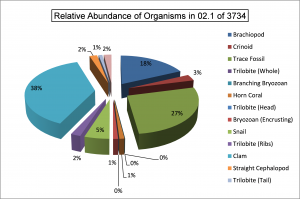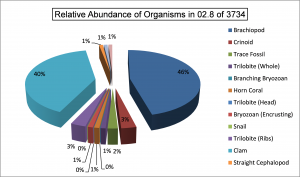Biodiversity refers to the number of different types of organisms within an ecosystem. One can count the number of types of animals, plants, fungi, or other organisms, but in this activity we will only study animals. The biodiversity of an environment depends on many things, such as how many sorts of food resources and living spaces the environment supports; if biodiversity becomes lower in a particular place we may say the environment is more “stressful,” though organisms adapted to those particular stresses (such as unusually high or low temperatures) may be very abundant.
Biodiversity can also give us hints about climate. For any particular kind of environment, such as a forest or the shallow ocean, biodiversity is usually higher in the tropics than at higher latitudes. Likewise, in a particular place, biodiversity often increases during warmer intervals. Warmer (but not extremely hot) environments are, on average, somewhat less stressful.
In aquatic environments, greater depths may on average be somewhat more stressful than shallower: there may be less food, less oxygen, and colder temperatures. For the purposes of this study it is important to know that rock layers with more types of organisms are more likely to have been deposited a shallow water environment and layers with less biodiversity are more likely from deeper water environments. Please remember that there are many possible exceptions.
In sum, scientists consider biodiversity to be a very interesting number that gives us basic information about an environment. Many environmental variables affect biodiversity, however, so – like all the variables you are studying – it may be difficult to understand why one rock layer has higher biodiversity of fossils than another.
Keep in mind that when looking at the graphs for this investigation we are not able to see all of the organisms that were alive in the environment since many organisms, especially those without hard parts are less likely to become fossils.


